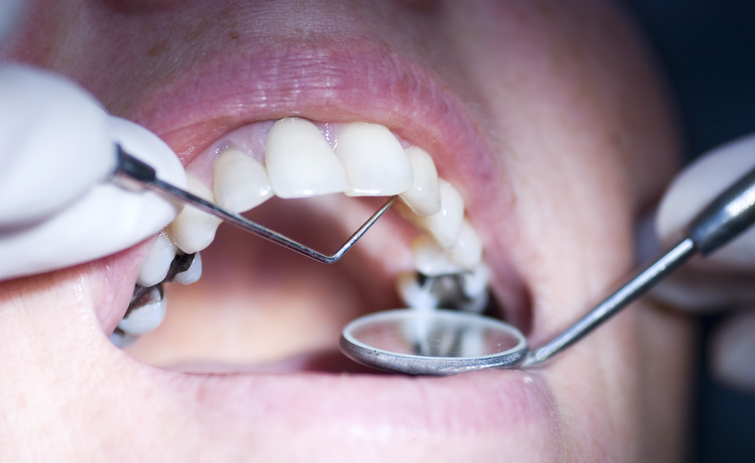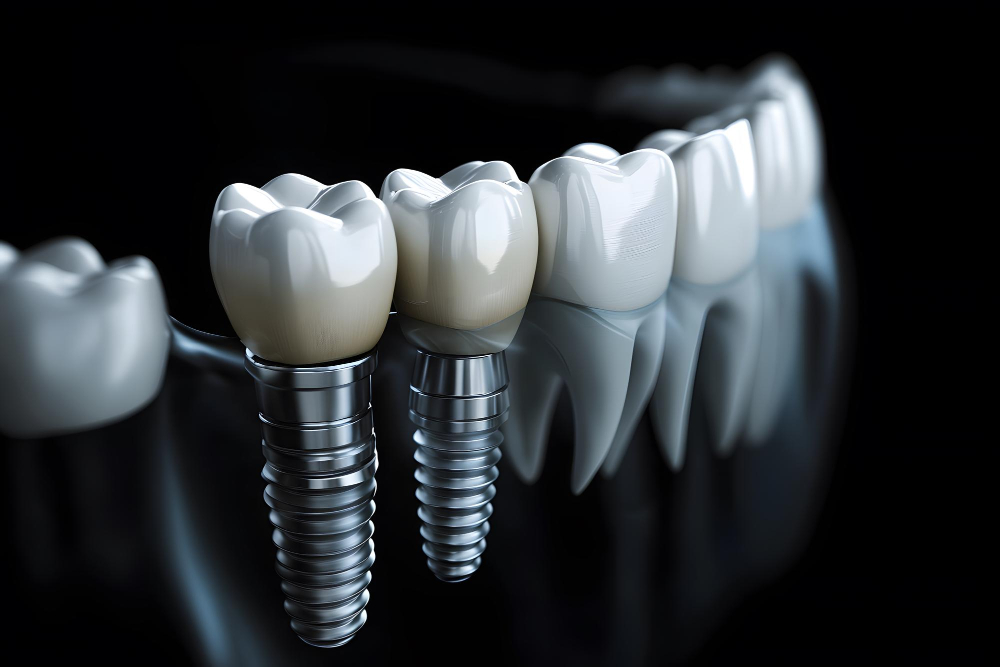
As a parent, ensuring your child’s dental health is crucial for their overall well-being. One of the most common dental issues children face is tooth decay, a condition that can cause pain, discomfort, and long-term oral health problems. Thankfully, dental fillings are an effective solution that can save your child’s teeth from further damage. In this blog, we’ll explore how fillings work, why they’re necessary, and how they can protect your child’s smile from decay.
Understanding Tooth Decay in Children
Tooth decay, also known as cavities or caries, is a common issue that affects children of all ages. It occurs when the enamel, which is the hard outer layer of the tooth, is damaged by acids produced by bacteria in the mouth. These bacteria feed on sugars and starches found in food and drink, producing acids that break down the enamel over time.
Children are particularly vulnerable to tooth decay because their enamel is softer and more prone to damage than that of adults. Additionally, many children consume sugary snacks and beverages, which contribute to the growth of harmful bacteria in the mouth. Without proper care, tooth decay can progress quickly, leading to painful cavities, infection, and even tooth loss.
The Role of Fillings in Preventing Further Damage
When tooth decay is caught early, fillings can be used to repair the damaged tooth and restore its function. A dental filling is a material used to fill in the cavity left by the decayed part of the tooth. This not only helps eliminate the cavity but also prevents the decay from spreading further.
Fillings are essential for protecting the tooth from future damage. Without a filling, the cavity will continue to grow, potentially reaching the inner parts of the tooth, such as the pulp, which contains nerves and blood vessels. If the decay reaches the pulp, it can lead to severe pain, infection, and even the need for a root canal or extraction.
Types of Fillings for Children
There are several types of fillings available, each with its benefits. The choice of filling depends on factors like the size of the cavity, the location of the decay, your child’s age, and their oral habits. Here’s a look at the most common types of fillings used for children:
- Silver Fillings (Amalgam):
- What they are: Amalgam fillings are made from a mixture of metals, including silver, mercury, tin, and copper. These fillings are durable and have been used for over 150 years.
- Pros: Amalgam fillings are highly durable and resistant to wear and tear. They are ideal for larger cavities in the back teeth, where pressure from chewing is greatest.
- Cons: The biggest downside of silver fillings is their appearance. They don’t match the color of natural teeth, which may not be desirable, especially for children with visible cavities in the front teeth.
- Composite Fillings:
- What they are: Composite fillings are made from a tooth-colored resin material that can be easily shaped to match the natural contours of the tooth.
- Pros: Composite fillings are aesthetically pleasing because they blend seamlessly with the natural color of the tooth. They are ideal for cavities in the front teeth or other visible areas.
- Cons: Composite fillings are less durable than amalgam and may need to be replaced more frequently, especially in areas that experience heavy chewing pressure.
- Glass Ionomer Fillings:
- What they are: Glass ionomer fillings are made from a mixture of glass and acrylic. These fillings release fluoride, which can help prevent further tooth decay.
- Pros: Glass ionomer fillings are a good choice for cavities in areas that are not subject to heavy chewing pressure. The fluoride release helps protect the tooth from future decay.
- Cons: These fillings are not as durable as amalgam or composite fillings, and they may wear down more quickly.
- Resilon Fillings:
- What they are: Resilon is a newer material that is similar to composite fillings but made of a thermoplastic root canal sealer.
- Pros: Resilon fillings are durable and flexible, offering a good seal to the tooth. They are often used for root canals but can also be applied to cavities.
- Cons: Resilon fillings are not as widely available as other types of fillings, and they can be more expensive.
The Process of Getting a Filling for Your Child
If your child has been diagnosed with tooth decay that requires a filling, the process is generally straightforward and can be done in a single visit to the dentist. Here’s what to expect:
- Examination and X-rays: The dentist will start by examining your child’s teeth and may take an X-ray to assess the extent of the decay. This helps the dentist determine the best course of action.
- Local Anesthesia: To ensure your child is comfortable and pain-free, the dentist will likely use a local anesthetic to numb the area around the affected tooth. This will prevent any discomfort during the procedure.
- Cleaning the Cavity: Once the area is numb, the dentist will use a drill or laser to remove the decayed portion of the tooth. The goal is to eliminate all the bacteria and decay while preserving as much healthy tooth structure as possible.
- Filling the Cavity: After the cavity is cleaned, the dentist will apply the chosen filling material. The material is carefully shaped to match the natural contours of the tooth. For composite fillings, the material is hardened using a special light.
- Polishing and Final Adjustments: Once the filling is in place, the dentist will polish the tooth and make any necessary adjustments to ensure that your child’s bite feels comfortable and natural.
- Aftercare: After the procedure, your child may experience some minor discomfort or sensitivity, which is normal. The dentist will provide aftercare instructions, which may include avoiding hard or sticky foods for a short period.
Benefits of Fillings for Children’s Teeth
Fillings provide a wide range of benefits for children who are suffering from tooth decay. Here are some of the key advantages of choosing fillings as a treatment option:
- Prevent Further Decay: Fillings help prevent the spread of tooth decay by sealing the cavity and stopping bacteria from entering. This helps preserve your child’s teeth and prevents the need for more extensive treatments in the future.
- Pain Relief: Decayed teeth can be painful, especially if the cavity has reached the pulp. Fillings help eliminate the source of the pain and restore comfort to your child’s mouth.
- Preserving Tooth Structure: By filling the cavity, the dentist helps preserve the natural tooth structure. This prevents the need for more invasive procedures, such as crowns or extractions, which may be necessary if the decay progresses unchecked.
- Restoring Function: Once the cavity is filled, your child can use their tooth for normal activities like chewing without worrying about discomfort or further damage.
- Aesthetic Appeal: Fillings, especially tooth-colored composite fillings, can restore the appearance of your child’s tooth. This is particularly important for children with cavities in their visible teeth, as it helps them maintain a confident smile.
The Importance of Early Intervention and Regular Check-ups
The key to preventing tooth decay in children is early intervention. The earlier a cavity is detected, the easier and less invasive the treatment will be. This is why it’s important to schedule regular dental check-ups for your child, starting at a young age. During these visits, the dentist will monitor your child’s oral health, provide cleanings, and identify any potential issues before they become more serious.
In addition to regular check-ups, parents can take proactive steps at home to protect their child’s teeth. Encouraging healthy eating habits, such as limiting sugary snacks and drinks, and teaching proper brushing and flossing techniques are crucial for preventing cavities. Using fluoride toothpaste and a fluoride mouthwash can also help strengthen the enamel and protect against decay.
When to See a Dentist for a Filling
If you notice any of the following signs, it may be time to schedule a visit to the dentist for a check-up and potential filling:
- Tooth Pain: Persistent pain in a tooth, especially when eating or drinking, could be a sign of a cavity.
- Sensitivity: Sensitivity to hot or cold foods and drinks may indicate that a cavity has formed.
- Visible Holes or Discoloration: If you notice visible holes, dark spots, or staining on your child’s teeth, it’s important to get them checked by a dentist.
- Bad Breath or Unpleasant Taste: A bad odor or taste in your child’s mouth could indicate a cavity or infection.
Conclusion: Protect Your Child’s Smile with Fillings
Fillings are an essential part of maintaining your child’s oral health. They prevent the spread of tooth decay, alleviate pain, and restore the function and appearance of the tooth. If your child has a cavity, getting a filling is a simple and effective way to save their teeth from further damage.
Remember that the best way to protect your child’s teeth is through regular dental visits, proper oral hygiene, and a healthy diet. By taking these steps and addressing tooth decay early, you can ensure that your child’s smile stays bright and healthy for years to come.
Take Action Today: Schedule Your Child’s Dental Check-up
If your child is due for a dental check-up or you suspect they may have a cavity, don’t wait! Early detection and treatment are key to preventing further damage. Contact your pediatric dentist today to schedule an appointment and ensure your child’s teeth remain healthy and decay-free.
FAQs
- What are the signs that my child may need a filling?If your child experiences tooth pain, sensitivity to hot or cold foods, visible holes, discoloration, or bad breath, it may be time for a dental check-up. These could be signs of tooth decay that may require a filling.
- What are the different types of fillings for children?Common types of fillings include:
- Silver fillings (Amalgam):Durable but not aesthetically pleasing.
- Composite fillings:Tooth-colored and ideal for visible cavities.
- Glass ionomer fillings:Fluoride-releasing, suitable for non-chewing areas.
- Resilon fillings:Durable and flexible, used for root canals or cavities.
- How do dental fillings help prevent further tooth decay?Fillings seal the cavity and prevent bacteria from spreading, which helps stop decay from progressing to deeper parts of the tooth, such as the pulp.
- Is getting a filling painful for my child?The filling process is usually painless for children, as the dentist will use a local anesthetic to numb the area around the affected tooth.
- How can I prevent tooth decay in my child’s teeth?Encourage healthy eating habits, limit sugary snacks and drinks, and ensure your child brushes and flosses regularly. Regular dental check-ups are also crucial for early detection and prevention of cavities.
- How long do dental fillings last in children’s teeth?The longevity of fillings depends on the material used and the location of the cavity. Silver fillings are more durable, while composite fillings may need replacement over time, especially in areas with heavy chewing pressure.
- When should I schedule a dental check-up for my child?Regular check-ups should start early in life, ideally by your child’s first birthday. Routine visits help prevent and detect cavities early, ensuring healthy teeth for your child.


